Blog News about Japan 未分類
You can enjoy the whole country of Japan in Tokyo! Visit “Antenna” Shops!

Tokyo Antenna Shops Have Something for Everyone
By Ryoji Shimada, staff writer
“Men-soree!” (meaning “welcome” in the dialect of Okinawa Prefecture) is the friendly way arriving customers are greeted. In the background is the rhythm of music from the south Pacific islands. The store’s colorful interior, with fruits and semitransparent glass evocative of rippling waves, gives the impression of the tropical summer. This is the image conveyed by the shop located in Tokyo’s famous Ginza fashion district, that sells fresh foods, handicrafts and other items from Okinawa, Japan’s southern island.
“We want customers to feel like they’re in Okinawa,” says Noriko Sugishita, chief manager of the “Ginza Watashi Shop,” a so-called antenna shop operated by Okinawa Prefecture. Since the shop’s opening in 1994 customers have increased year upon year, with an estimated 1.3 million coming to shop in 2011.
“I like the tropical theme of the store interior,” says one of the store’s regular patron, a 34-year-old female office worker. She says she has come today to purchase an acerola beverage. A housewife in her 60s, who became interested in Okinawa after her married daughter moved there, says “I don’t want stuff in a bottle — it has to be made freshly.” She holds up a net filled with several small round fruits from Okinawa called shiikwaasaa (Citrus depressa).
People visit the Okinawa shop for a variety of reasons. Some have heard about some product via the grapevine or seen something on television, and come to buy it. Some are just passing by on the sidewalk and walk in out of curiosity. Others had been in Okinawa recently but forgot to buy souvenirs, or perhaps didn’t want to be bothered with the burden of lugging back heavy items. Still others are attracted after they see the shop featured on variety TV shows, or they come for special events to sample goods.
The concept behind the “antenna shop” is to promote the produce of a particular locale. Concerning the purpose of her antenna shop, Sugishita explains the marketing aspects, saying, “How do we sell things? Which products are likely to sell? For these and other reasons we want to grasp the conditions in the Tokyo metropolitan area. Through starting actual sales of some products, we can generate a positive cycle, so that our sales motivate manufacturers to produce more goods.”
Perhaps from the same perspective of nurturing producers, an antenna shop to market goods from the northern island of Hokkaido was opened in Ginza in 1997, opposite the Okinawa shop. The “Hokkaido Dosanko Plaza,” favorably located close to a train station, claims some 2.2 million visitors per year. Yoshio Aoki, the store manager, says many of his customers are people who have been to Hokkaido, or those with personal ties to Hokkaido, such as people with relatives there, or employees of Hokkaido companies who are on assignment to Tokyo unaccompanied by their families. “More than coming here to buy souvenirs, they want to use it in the regular sense,” Aoki says. He hopes they will become repeat patrons.
According to data from the Ministry of Agriculture, Forestry and Fisheries, in 2010, Japan’s total food self-sufficiency, when measured on a calorie basis, was 39%. However for the island of Hokkaido alone, food self-sufficiency surpasses 200%. For this reason, the shop is crammed with a wide range of food products, ranging from sea foods to fruits, vegetables and rice. Presently packaged charcoal-grilled sanma (saury) and cuttlefish stuffed with rice are said to be selling well. From the vantage point of marketing, one corner of the display is devoted to new products. Out of some 100 items, only the top-selling 30% over a three-month period are retained. Some are kept on sale regularly. This system is set up to maintain a balance between offerings of new items and popular sellers.
Tokyo, with over 13 million people, is an enormous consumer of goods. This is probably the main reason why although Japan has 47 prefectures, nearly all the antenna shops in the country are located here. The stores permit customers to sample the atmosphere of the localities, and several travel agencies have even organized tours that visit Tokyo’s antenna shops. “Sometimes they come in large groups via tour bus,” says Sugishita, who adds that in such cases they will notify the shop beforehand. According to Aoki, the mood toward domestic travel was heightened in the wake of the so-called Lehman Shock of 2008, and more customers began visiting the shops following frequent coverage in the media from around 2009.
When asked whether or not foreigners also patronize the shop, Sugita responded, “Not so many. Perhaps it’s because they don’t know we exist.” But for foreign visitors pressed for time, whose stay is limited only to Tokyo, these antenna shops can be recommended as places to capture the atmosphere and flavor of Japan’s local areas.
Blog News about Japan 未分類
Japan’s best garden

Seeing Is Believing?
In 2011, the Adachi Museum of Art in Yasugi City, Shimane Prefecture, was ranked as first in Japan by the US magazine “Journal of Japanese on Gardening.” This marked its ninth consecutive year to be accorded such recognition.
Each year since 2003 the journal has sent some 30 experts to Japan to review the gardens at traditional Japanese inns, museums, castles and others, totaling 850 sites in all. The judging standards include quality, harmony with neighboring buildings, treatment of visitors and so on. Ranked in second place for 2011 was Katsura Imperial Villa in Kyoto, followed by Ritsurin Garden in Kagawa Prefecture.
We suppose that photographs alone won’t show what a superb garden it is. So then, how about going there to see it for yourself?
Adachi Museum of Art
Address: 320, Furukawa-cho, Yasugi-city, Shimane Prefecture
Tel: +81-854-82-7111
Blog News about Japan 未分類
Osaka Film Festival

Last November, the 26th Osaka European Film Festival was held. The occasion commemorated the 38th anniversary of sister city ties between Osaka and Milan, Italy, and also the 158th anniversary of Italy’s “Risorgimento” (unification). Milan’s orchestra was invited, and a pianist provided a solo accompaniment to the 1910 silent film, “Anita Garibaldi.” A 28-year-old woman who attended the event said, “I thought the film and music were perfectly matched — it was wonderful.” Other silent films at the event were accompanied by jazz and a variety of musical performances, and this old-but-new method of artistic expression garnered much attention.
Blog News about Japan 未分類
Panda Post Box

One of the most popular attractions in Tokyo’s Taito city is the giant panda exhibit in Ueno Zoo. Celebrating the arrival of its two newest inhabitants, named Ri Ri and Shin Shin, a specially adorned post box was set up by the zoo entrance. Any letters posted here will be marked with a special cancellation stamp “bearing” the image of a giant panda or of Takamori Saigo, a famous 19th century political figure whose statue is another prominent feature of Ueno Park. It is not surprising if people who love pandas use the box to mail letters to themselves.
Blog News about Japan 未分類
Shibuya Changing

Sentaa-gai, or Center Town as it is rendered in English, is the name of a famous commercial thoroughfare in Tokyo’s Shibuya district, which has become a Mecca for Tokyo youth. Last autumn, however, one of the street’s official name was changed to “Basketball Street.” The new moniker aims to reduce the street’s negative image by associating it with a popular sport. From the 1980s, Sentaa-gai’s environment had increasingly deteriorated, earning it a reputation as a place to obtain illegal drugs or where youth gangs congregated. The street subsequently became known as a hangout for equally disrespectable characters, such as dark-skinned ganguro girls known for their garish cosmetics and lurid costumes, and similarly flashy young males referred to as “Center Guys.” It is hoped the street’s new name will aid in efforts to make it a more wholesome place to visit.
Blog News about Japan 未分類
Japan’s Largest “non-Japanese” Neighborhood

The streets, featuring stately rows of old western-style houses amidst the greenery, may seem a bit incongruous in Japan, and at first glance the neighborhood might even be mistaken for a recently built theme park. But these houses are the real thing. Referred to in Japan as “Ijinkan” (foreigners houses), they were constructed as residences for westerners from the mid 19th century from the “Bakumatsu” (late Edo era) to the Meiji and Taisho eras. Many such houses were constructed in the cities of Hakodate in Hokkaido, Yokohama in Kanagawa, Kobe in Hyogo and Nagasaki, but due to fires and natural calamities most of them have vanished. The one exception is Kobe, where some 40 houses remain. Nearly all of them were once foreign consuls in use by diplomats for offices or residents. Presently they serve as a window on the west, and they attract many sightseers from both within and outside of Japan.
<History of Kobe’s Ijinkan>
In 1858, Japan’s ruling Tokugawa government concluded a Treaty of Amity and Commerce with the United States, and similar treaties with four European nations. Japan agreed to end over two centuries of self-imposed national isolation by opening five seaports to trade. The ports were Hakodate, Niigata, Yokohama, Kobe and Nagasaki. The treaties stipulated that foreign nationals would be confined to living in designated areas. The district in one such port, Kobe, was close to the seacoast. However, the facilities there did not proceed as planned, and foreigners began building their homes further inland, such as the slopes of Mt. Rokko, which we will be introducing here. The district is somewhat apart from Kobe’s central commercial and industrial zones, and was fortunately spared from air raids on Kobe during World War II. As such, the neighborhood preserves a rare view of upscale life in prewar Kobe.
-1024x683.jpg)
A colonial style house (right) built by and continuously lived in by an Englishman. The houses on the left had previously been apartments occupied by foreigners but they have now been combined and are used as a tourist attraction, displaying French art and furnishings.
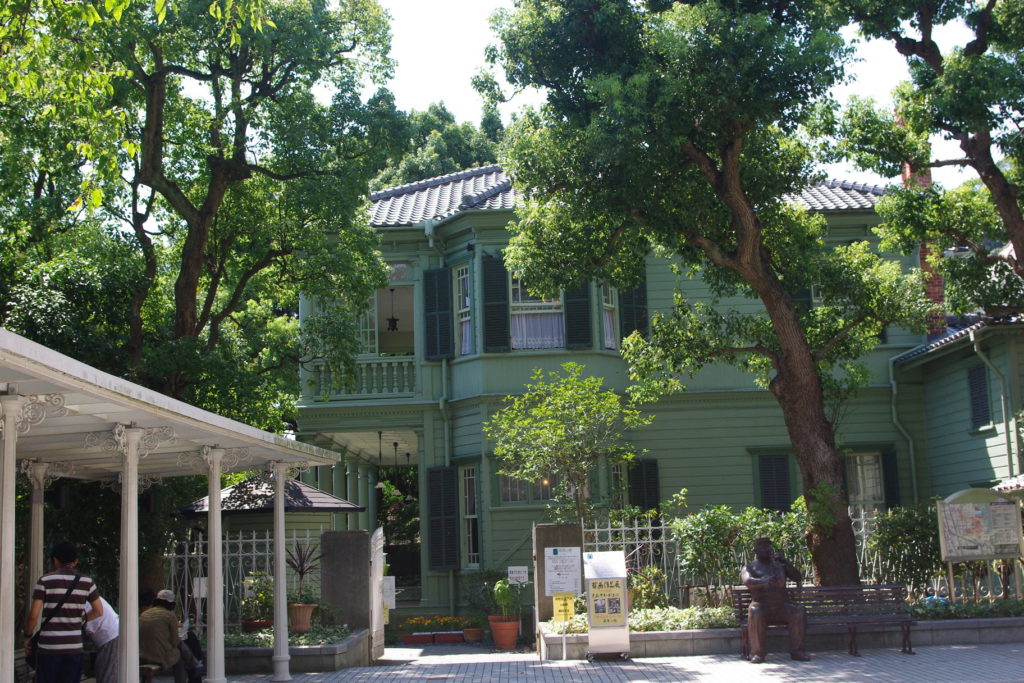
This was built in 1903 as the residence of U.S. consul general Hunter Sharp. It is presently called “Moegi no Yakata.”

This house was the residence of German businessman Gottfried Thomas. In the backdrop is an expansive view of the hills of Kobe. It is now known as “Kazamidori no Yakata.”
-
-150x150.jpg)
- The “Rhine no Yakata,” built for Mr. and Mrs. J.R. Drewell of France in 1915. It was long occupied by a German but more recently it became property of Kobe City and was opened to the public.
-

- The former Chinese consulate. Built in 1940. It reproduces the style of those times with displays of furnishings, ornaments, artworks and so on.
-

- A Tudor-style house called Yamate Hachiban-kan. In addition to works by Rodin and Bourdelle on display, one room also features unusual primitive artwork by Africa’s Makonde tribe.
-

- This building, open to the public in 1994, lets visitors encounter the history and culture of Austria. The Denmark house is located next door.
-
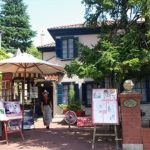
- This house, with a pyramidal roof, was built in the Taisho era (1912-1926). It was utilized as the Netherlands consulate and is now open to the public as the “Oranda-kan” (Dutch House).
Blog News about Japan 未分類
Japan’s Sake Factory Visits
January, the coldest month of the year in Japan, has traditionally been the time when fresh brews of sake are finished. Sake, which has gained great popularity even outside Japan in recent years, is made from rice which is harvested in autumn, brewed, fermented, and completed just in time to greet the New Year. For sake brewing, water is very important, which along with rice composes 80% of the final product, so areas blessed with superior quality groundwater such as Fushimi, Kyoto Prefecture and Nada, Hyogo Prefecture produce around 50% of Japan’s sake.
Sake has a very deep time-honored connection to the Shinto religion in Japan. In Shinto wedding ceremonies, the wedding vows are enacted by the couple drinking sake together, and in Shinto festivals this sacred alcohol of sake is offered to worshipers. In this way, sake has become indispensable in the daily life and at turning points of one’s life since ancient times.
Sake can be enjoyed both chilled and hot, which is relatively rare for alcohol. Enjoying a warmed cup of fresh sake during the cold winter is something to look forward to. Sake also perfectly complements the subtle flavors of Japanese cuisine as one would expect, but since it draws out the flavor of food so well, the number of restaurants in cities such as New York and Paris which offer Japanese sake has been increasing. In 2006 a sake division was established in England’s traditional International Wine and Spirit Competition, and its degree of recognition is increasing little by little. Particularly a type of sake called “daiginjoshu” which has a flavor similar to white wine is gaining popularity.
The storehouses used to preserve sake brews are called “sakagura.” When visiting a sake brewing town in Japan one can witness the scene of these storehouses lined up along the streets. Various sake brewers are assembled in Nada ward and the flavors vary depending on the maker. You can enjoy walking from brewer to brewer searching for your favorite sake.
For strolling around Fushimi, located in Kyoto Prefecture, we recommend the “Sunrise Tour” in English aimed at foreigners, called “Fushimi Inari Shrine and Sake Tasting Tour.” It includes tours of sake brewing facilities, sake tasting, and a tour of the famous Fushimi Inari Shrine.
Tour starts from the stroll through the sake brewery streets, then to the Gekkeikan Sake Museum. There, visitors can view tools used in sake brewing and related historical objects, sample water used in sake production, and take an exclusive tour of the sake brewing facility itself. Here, you can participate in sake tasting, so why don’t you try finding your favorite sake?
Next, visit Fushimi Inari Shrine famous for its path lined with thousands of red torii gates. Shinto shrines’ gods are known for granting wishes, and it is said that the Fushimi Inari shrine answers requests of prosperous sales in particular.
Blog News about Japan 未分類
Study rooms in Tokyo
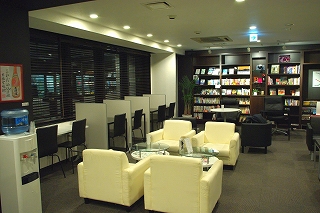
<Hideaway in the City>
Enter the lonely building, and ride the elevator, which smells of mildew, up to the third floor, and suddenly you’re in another world. This chic interior with wood paneling at this shop makes use of an air purifier to generate negative ions, creating a roomy and comfortable space. With its invitingly cozy stuffed furniture, this room is where company staff members who work in the city go to study foreign languages or prepare for qualification examinations. Named the “Study Café,” it is one of three such establishments in the greater Tokyo area. So far it has attracted over 600 members. Most of them visit to engage in self-study, but the cafes have also hosted various types of seminars and social events.
Blog News about Japan 未分類
Lighter Ordinance in Japan

<Lighter Ordinance>
After a fire damaged several buildings at a shopping street in Yokohama last August, the cause was determined to be a cigarette lighter. Now more lighters are being designed as “CR” (child resistant), with a lockable two-step mechanism. Unfortunately children playing with lighters has been the source of many fires. Some 600 million disposable lighters are sold in Japan each year. To prevent mishaps that lead to fires, from September 27, 2011, manufacturers have been required to adopt a CR function, and sales of the so-called 100-yen disposable lighters not equipped with this function will be banned. A similar law went into force in the United States in 1994.


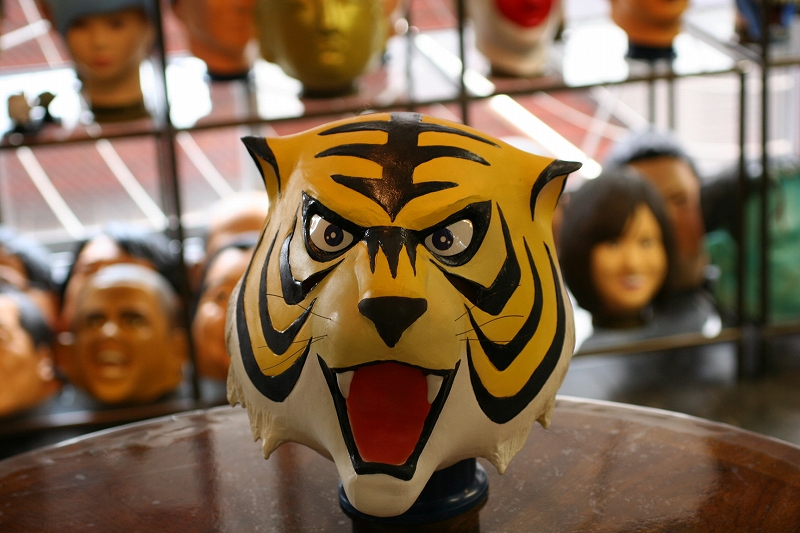
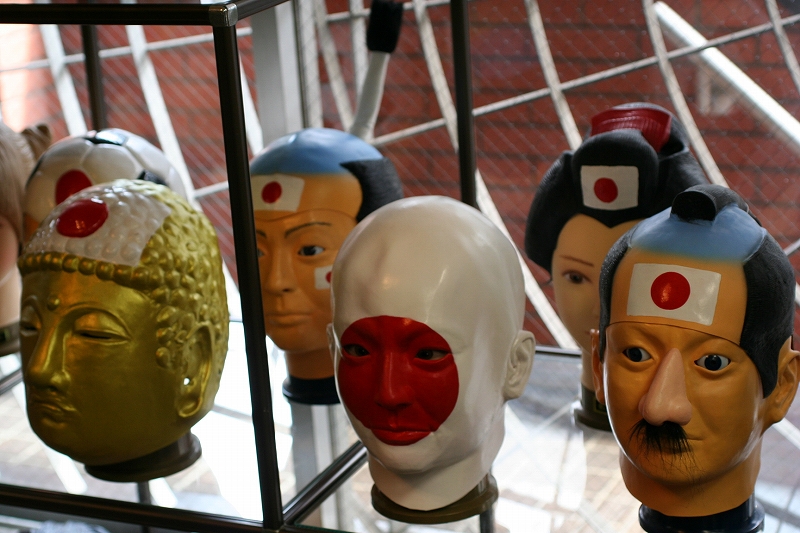
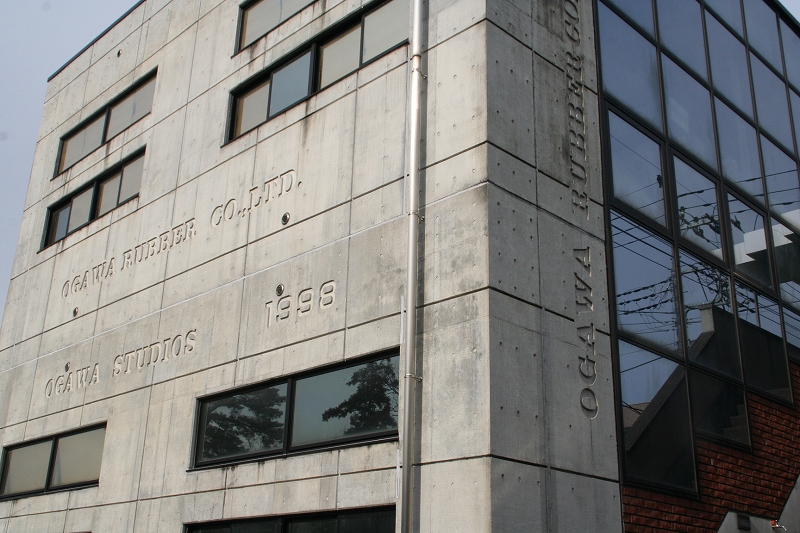













-150x150.jpg)








